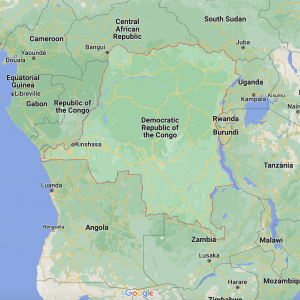Islamic manuscripts in Germany: A legacy of art, war, and diplomacy
German libraries house thousands of Islamic manuscripts, reflecting centuries of cultural exchange, conflict, and preservation
BERLIN (MNTV) – A recent study by the University of Hamburg’s Center for the Study of Manuscript Cultures has illuminated how Islamic manuscripts, now central to understanding Islamic art and literature, found their way into German collections.
Germany’s major libraries, including those in Berlin, Munich, and Gotha, continue to safeguard thousands of Islamic manuscripts, offering a glimpse into centuries of cultural exchange and conflict between Europe, the Middle East, and North Africa.
The journey of Arabic, Turkish, and Persian manuscripts to German libraries is a story interwoven with diplomacy, conquest, and cultural exchange.
Initially arriving as diplomatic gifts or spoils of war, many manuscripts found their way into the hands of nobles and church treasuries.
However, political upheavals and the secularization of European states often led to their dispersal and misclassification.
By the 17th century, the Ottoman Empire’s proximity further expanded European collections, including Islamic art and literature.
The state libraries of Berlin and Bavaria, alongside the Gotha Research Library, now hold Germany’s largest collections of Eastern manuscripts.
During World War II, German authorities distributed cultural artifacts, including manuscripts, across Europe and the Soviet Union to safeguard them.
The Gotha Research Library’s collection, for example, was transferred to the Soviet Union in 1946 and returned intact a decade later.
However, many other works were stolen or lost during this tumultuous period.
Berlin’s State Library, founded in 1661 by Frederick William I, houses Germany’s largest collection of Oriental manuscripts.
The Prussian king’s ambition to integrate Arabic, Persian, Turkish, and other manuscripts into his commercial and colonial ventures led to significant acquisitions.
Meanwhile, Bavaria’s library in Munich, holding over 4,200 Islamic manuscripts, began with collections by Johann Albrecht Widmanstetter, an orientalist and diplomat.
Colonial and economic interests were not the only drivers of manuscript transfers.
Wars, such as the Siege of Vienna (1529) and the Battle of Lepanto (1571), saw European forces capture Islamic manuscripts as spoils.
Manuscripts from Tunis and Morocco were looted and transported to libraries in Germany, Spain, and beyond.
By the late 19th century, German libraries engaged in an intense competition to expand their collections.
Donations, purchases, and even piracy contributed to the accumulation of rare manuscripts, including Quranic texts and works from Yemen, Egypt, and the Ottoman Empire.
In 2014, researchers in Germany identified one of the earliest known copies of the Qur’an, dating back to within two decades of the Prophet Muhammad’s death.
Using carbon-14 dating, scholars at the Coranica Project at the University of Tübingen analyzed a manuscript written in Kufic script, one of the oldest styles of Arabic calligraphy.
Their findings revealed a 95% probability that the parchment originated between 649 and 675 CE, making it a remarkable relic from the early Islamic period.
The manuscript, part of a collection donated to Tübingen University in the 19th century, highlights the enduring significance of Islamic manuscripts in understanding the history of the Qur’an’s transmission.
Today, these collections remain critical to understanding Islamic art, culture, and history.










